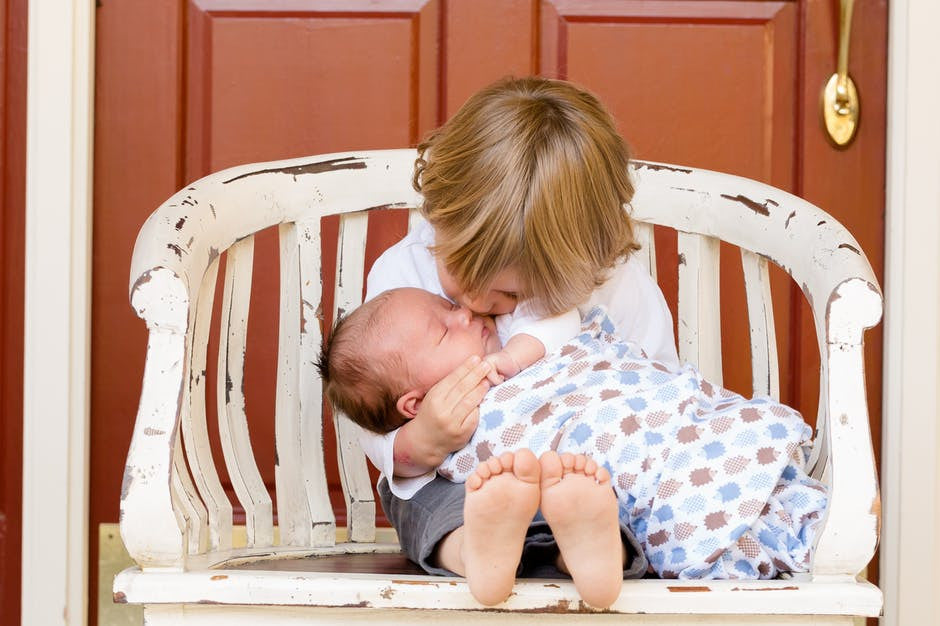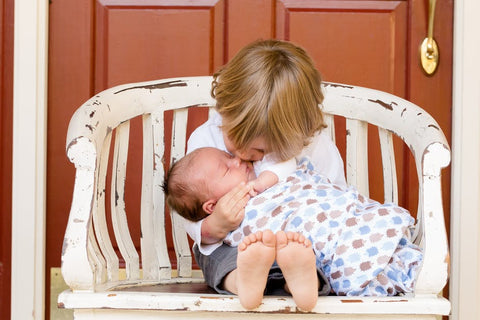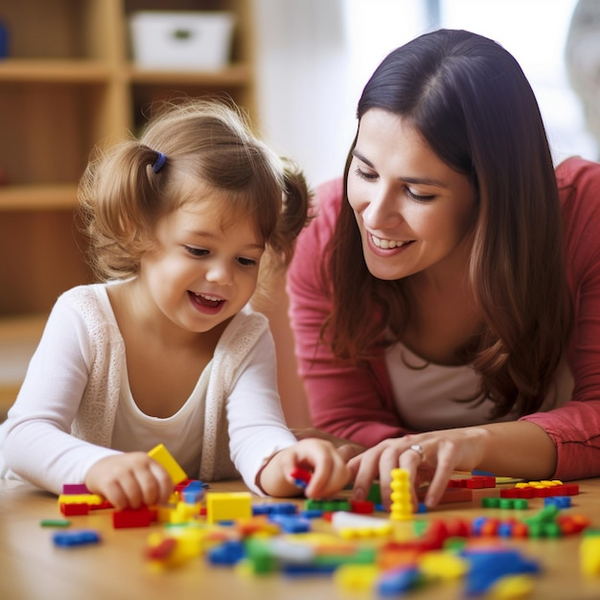
Teaching Toddlers Empathy
Erin Burt

Our toddler and preschooler were very excited to have a new baby sister in the house but didn’t care for all the rules that came along with her. Staying quiet sometimes, not swatting at her, staying away when sick, and not picking her up were among the first guidelines. Likewise, not jumping on mommy (Hello, C-section!), letting mommy rest, and giving mommy time to get things done just reeeeallly pushed them to the brink of impatience.
I like to think hubby and I instill in our children kind and empathetic thoughtfulness. We hope the seeds we plant now will grow into something more as time goes on. The returns on teaching empathy take time though. A child must first cognitively recognize that he or she is an individual, separate from others (like mom or friend), and that everyone has their own thoughts and feelings. Considering toddlers are very much in the “Me, me, me; mine, mine, mine” stage of life, expecting nuanced empathy from them is not yet age-appropriate.
Children begin to more fully understand the concept of and demonstrate empathy closer to school age. Like other complex concepts we explain to children (You know, all those hot-button topics like sex, good and evil, marriage, diversity, death, etc.), teaching starts very basic and foundational and becomes more involved over the years.
For example, my 3 year old may understand that he is happy to have a toy but his infant sister that he just it took from is sad. However, he may not yet understand telling a man in the store that he’s “Super fat” is hurtful. Learning to see the big picture takes time. So we focus on “simple” things:
- We create clear guidelines. We will give a direct, “No!” if he tries to hit, take things away, or wake sister. We follow up with a short explanation without getting too deep because his age does not do well with long-winded explanations.
- We use lots of words. We started with glad, mad, and sad. Then we introduced frustrated, scared, anxious, and more nuanced emotions. Sometimes I point out the emotion, other times I ask what emotions they feel or imagine someone else feeling (a variation of role-play). Acknowledging emotions is one of the first things we do in a variety of situations, especially those when emotions are palpable. Which leads me to…
- See opportunities. Don’t just talk about feelings and experiences. See them in action in the person standing on the corner with a sign, the man who just honked at you in traffic, the character in a book, or the woman laughing in across the doctor’s office room. These are all opportunities to learn about other people thoughts and feelings.
- We invest time in general, not just for teaching. We don’t just teach empathy; we do that whole lead-by-example thing that is all the rage. We give our children space to feel and think, and hubby and I give each other time and space to do the same. We respond to each other respectfully, both for the sake of our marriage and the example we offer our children. It is there, in those moments that I take the time to listen, that my children learn the value of being heard. Working with kids through their emotions, not shaming them, can help them learn to value and process their emotions on their own as they grow.
- We use words to describe what is happening. I say something like, “Oh no, sister’s blankie is way over there. I wonder how she could get it.” Sometimes my toddler picks up on my passive comment. When he doesn’t, I ask him to grab it and then thank him for being “helpful.” I may help him learn to see other people’s wants and needs as well as see how he can play a “helpful” role in relation to another person. And preschoolers love to be helpful! Encouraging him now is hoping that one day it will be second nature and not something I will need to force.
Your example now can set up habits later that will deepen with time. Just like a child learns to bring his or her plate to the counter after eating or put away toys after playing, the initial unquestioned habits can grow into deeper understanding of others and one’s place in the world as the years go on.
Lynette is a mom of three children from one year to age five. She has cloth diapered all three since birth and enjoys all things eco-friendly and mindful living.
Tags: infant, toddler, preschooler, empathy, family, development







